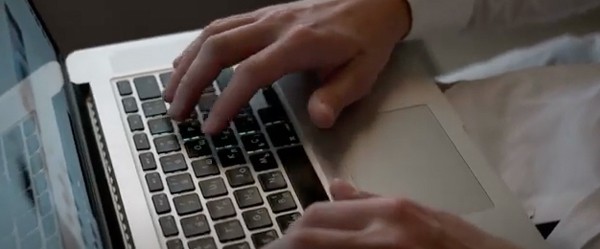Intellectual Property is not just for big business. Any products that you have designed, processes that you do uniquely, or brands that you have built up can constitute valuable intellectual property and can be an important asset for your business. It’s therefore crucial to understand what your IP is, and protect it accordingly.
There are a number of ways of protecting IP in Australia. Some protection can be automatic, but when it comes to a dispute, you’ll be in a much stronger position if you have formalised your rights with a patent or registered trademark.
IP is actually a major cornerstone of many businesses, and without protecting it, their whole business model can be vulnerable.
British patent attorney Jonathan Jackson, of D Young & Co LLP, put it this way in Eureka magazine. “There is little point funding the development and marketing of a new product or service knowing that a competitor can take the idea and launch their own competing product or service if all your hard work and investment creates a successful product or service.”
For small businesses, this may seem like a remote threat – but of course, the more popular your product, design or brand becomes, the more others will seek to copy it.
What is IP?
“From the name on your door, to an innovative new process, there will be things that differentiate you from your competitors. As your business grows, so too will the importance of these intangible assets.”
So says IP Australia, the agency of the Department of Industry, Innovation and Science which administers intellectual property rights. IP Australia also provides a handy guide aimed at helping smaller businesses to understand the different types of IP which are recognised in Australia, and the advantages of each one.
It’s well worth a read for any business owner seeking to cement the intangible value of their business and protect its future rights, but in short: “Patents protect inventions, design registration protects their look. A registered trade mark protects brand names, logos, original sounds and scents, and even aspects of packaging.”
Protecting your IP
The first thing to do, if you have a new idea, is to keep it secret. If you start letting customers, rivals, investors, suppliers or anybody else see your design, process or cool brand, they could simply copy it and even potentially register it themselves. You might still be able to fight and get it back, but that will be a very costly and uncertain process.
Once you have something which you can clearly define as uniquely yours, you should apply for a patent or trade mark. You must do this before you go to market, and your product becomes widely know: commercial use or even an exhibition of the invention before you file a patent application may prevent you from receiving a patent.
Once you have a patent and/or trademark, you can go ahead and start scaling up your business around it. But you should perform occasional checks to see that nobody is breaching your intellectual property rights, and take legal advice if you think somebody is. Allowing them to continue flaunting your IP can erode your rights.
Harry Potter and the SME that took on a global corporation
Here’s a good story to illustrate the importance of registering your brand – however mundane it may seem at the time.
As you can imagine, Time Warner – the entertainment giant which owns the film rights to the Harry Potter book series – has a pretty good legal department. But their attempts to stop a much smaller Australian company from selling ‘harry potter’ branded clothing failed thanks to the solid IP practices of the Aussie brand.
Stepsam Investments Pty Ltd had been using the Harry Potter name since 1994 – before the first book was even written – and applied to IP Australia to register the trade mark ‘harry potter’ in respect of clothing four years later, just as the first books of the same title were reaching these shores.
Soon the boy wizard had far outgrown the clothing range, and Time Warner attempted to put an end to the use of the name by Stepsam. However, the fashion firm could prove it had been using the term for many years and even had a trade mark application. In 2004, the Federal Court decided that Stepsam could continue using the name, even for children’s clothing.
This shows just how important it is to protect the intangible assets of your business – you never know what they might be worth one day, or who will want to claim them. Yes, there is an upfront cost to filing patents and registering trademarks, but ultimately they can prove a crucial investment.
If you need help to finance these one off investments in your business, invoice financing could be ideal: you’ll just pay a one-off, pre-agreed fee. Then you can carry on growing, with no worries over paying back a business loan, and secure in the knowledge that your business’ key brands, designs and products can’t be ripped off by unscrupulous competitors or shut down by big corporate rivals.
“Get Tomorrow’s Cash flow Today”
Who is OptiPay?
OptiPay, one of Australia’s leading business finance providers, has been dedicated to helping small business owners solve cash flow challenges for over a decade and has provided $1.5 billion in business funding to more than 500 Australian businesses. OptiPay specialises in modern financing solutions such as invoice factoring, invoice finance, debtor finance, and lines of credit. OptiPay’s mission is to support business growth providing liquidity in as little as 24 hours, ensuring they have access to tomorrow’s cash flow today. This rapid access to funds helps businesses maintain smooth operations and seize growth opportunities without the stress of cash flow constraints. At OptiPay, we believe that healthy cash flow is the lifeblood of any successful business. Our commitment to helping businesses overcome financial hurdles and achieve their growth ambitions has solidified our reputation as a trusted partner in the business finance sector. Whether you are looking to stabilise your cash flow, expand your operations, or navigate financial challenges, OptiPay is here to support your journey with innovative and efficient financing solutions.



